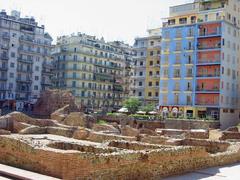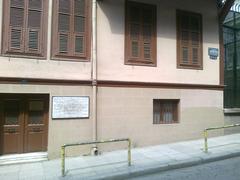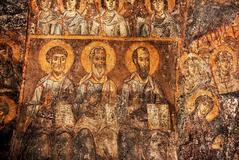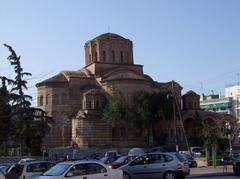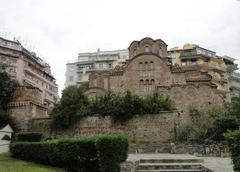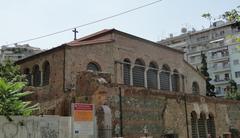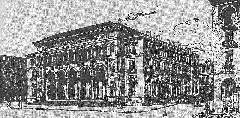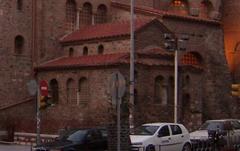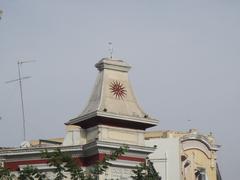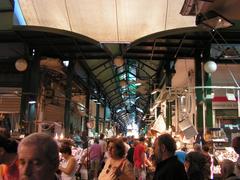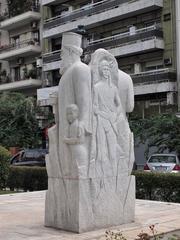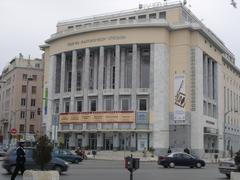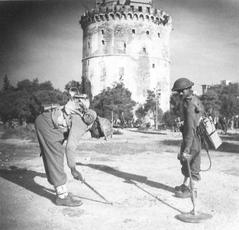
Visiting Navarinou Square: History, Tips, and Visitor Information
Publication Date: 23/07/2024
Introduction to Navarinou Square
Navarinou Square, located in the heart of Thessaloniki, Greece, is a captivating blend of historical richness and vibrant urban life. This iconic landmark stands as a testament to the city’s dynamic past, spanning from its ancient origins through the Byzantine and Ottoman periods, and into the modern era. The square is built over the remnants of the Roman Palace Complex of Galerius, constructed in the early 4th century AD, which served as the administrative center for the Roman Emperor Galerius. Today, visitors can explore these ancient ruins alongside modern cafes, restaurants, and shops that populate the area, creating a unique juxtaposition of past and present. Additionally, Navarinou Square is not only a historical site but also a cultural hub, hosting various events, performances, and exhibitions throughout the year. This comprehensive guide aims to provide detailed information on the history, cultural significance, and practical aspects of visiting Navarinou Square, ensuring that you make the most out of your visit to this remarkable Thessaloniki landmark (Thessaloniki Travel, UNESCO).
Contents
- Introduction
- History of Navarinou Square, Thessaloniki
- Ancient Origins
- Byzantine and Ottoman Periods
- Modern Era and Urban Development
- Archaeological Discoveries
- Cultural Significance
- Practical Visitor Information
- Visiting Hours and Tickets
- Travel Tips
- FAQs
- Preservation and Challenges
- Conclusion
- Sources
History of Navarinou Square, Thessaloniki
Ancient Origins
Navarinou Square is built over the ruins of the Roman Palace Complex of Galerius, constructed in the early 4th century AD. This complex was part of the larger Galerian Complex, which included the Rotunda, the Arch of Galerius, and the Hippodrome. The palace served as the administrative center for the Roman Emperor Galerius, who ruled from 305 to 311 AD. The remnants of this palace can still be seen today, providing a tangible link to the city’s Roman past (Thessaloniki Travel).
Byzantine and Ottoman Periods
During the Byzantine era, Thessaloniki continued to be an important city, second only to Constantinople in the Byzantine Empire. The area around Navarinou Square remained significant, although the exact uses of the space during this period are less well-documented.
The Ottoman conquest of Thessaloniki in 1430 brought significant changes to the city’s architecture and urban layout. The Ottomans repurposed many existing structures and built new ones, including mosques, baths, and markets. While Navarinou Square itself did not become a focal point during the Ottoman period, the surrounding area saw the construction of several notable buildings, such as the Bey Hamam, an Ottoman bathhouse built in 1444, which is located nearby (UNESCO).
Modern Era and Urban Development
The modern history of Navarinou Square begins in the late 19th and early 20th centuries, a period marked by significant urban development and modernization in Thessaloniki. Following the Great Fire of 1917, which destroyed much of the city center, Thessaloniki underwent extensive reconstruction. The fire led to the creation of new urban plans that aimed to modernize the city while preserving its historical heritage.
Navarinou Square emerged as a public space during this period of reconstruction. The square was named after the Battle of Navarino, a decisive naval battle fought in 1827 during the Greek War of Independence. The battle saw the combined fleets of Britain, France, and Russia defeat the Ottoman-Egyptian fleet, leading to the eventual independence of Greece. Naming the square after this battle reflects the nationalistic fervor and the desire to commemorate significant events in Greek history (Greek Reporter).
Archaeological Discoveries
One of the most fascinating aspects of Navarinou Square is the ongoing archaeological work that continues to uncover new insights into the city’s past. Excavations in the square have revealed extensive remains of the Roman Palace Complex, including parts of the palace itself, mosaics, and other artifacts. These discoveries have provided valuable information about the layout and function of the palace, as well as the daily lives of its inhabitants.
The archaeological site within the square is accessible to the public, allowing visitors to explore the ancient ruins and gain a deeper understanding of Thessaloniki’s rich history. Information panels and guided tours provide context and explanations, making the site an educational experience for both locals and tourists (Visit Greece).
Cultural Significance
Navarinou Square is not just a historical site; it is also a vibrant cultural hub. The square is surrounded by cafes, restaurants, and shops, making it a popular gathering place for both residents and visitors. The juxtaposition of ancient ruins and modern urban life creates a unique atmosphere that reflects the city’s dynamic character.
Throughout the year, Navarinou Square hosts various cultural events, including music performances, art exhibitions, and festivals. These events celebrate the city’s diverse cultural heritage and provide opportunities for community engagement and cultural exchange. The square’s central location and historical significance make it an ideal venue for such activities, further enhancing its role as a cultural landmark (Thessaloniki Tourism).
Practical Visitor Information
Visiting Hours and Tickets
Navarinou Square is open to the public 24/7. However, the archaeological site within the square has specific visiting hours, typically from 8:00 AM to 8:00 PM. There is no entrance fee to explore the square itself, but guided tours of the archaeological site may require a ticket, which can be purchased on-site or online.
Travel Tips
- Getting There: Navarinou Square is centrally located and easily accessible by public transportation. Buses and taxis are readily available.
- Best Time to Visit: Early mornings or late afternoons are ideal for visiting to avoid the midday heat and crowds.
- Nearby Attractions: Don’t miss the nearby Rotunda, Arch of Galerius, and the bustling Aristotelous Square.
- Local Eats: Enjoy a meal or coffee at one of the many cafes and restaurants surrounding the square.
FAQs
Q: Is Navarinou Square wheelchair accessible?
A: Yes, the square is generally accessible, but some parts of the archaeological site may have uneven terrain.
Q: Are there guided tours available?
A: Yes, guided tours are available and highly recommended for a deeper understanding of the site’s historical context.
Q: Can I take photographs?
A: Photography is allowed, but it is advisable to check for any restrictions, especially within the archaeological site.
Preservation and Challenges
Preserving the historical and archaeological integrity of Navarinou Square while accommodating modern urban needs presents several challenges. The square’s central location and popularity mean that it is subject to heavy foot traffic and urban pressures. Balancing the needs of preservation with those of urban development requires careful planning and collaboration between archaeologists, urban planners, and local authorities.
Efforts to protect and maintain the archaeological site include regular monitoring, conservation work, and public awareness campaigns. These initiatives aim to ensure that the historical significance of Navarinou Square is preserved for future generations while allowing it to remain a vibrant part of the city’s urban fabric (Hellenic Ministry of Culture and Sports).
Conclusion
Navarinou Square in Thessaloniki is a remarkable example of how ancient history and modern urban life can coexist. Its rich historical layers, from the Roman Palace Complex to its role as a contemporary cultural hub, make it a must-visit destination for anyone interested in the history and culture of Thessaloniki. The ongoing archaeological work and preservation efforts ensure that the square will continue to be a place of discovery and inspiration for years to come. For more information on visiting Thessaloniki and its historical sites, check out our related posts and follow us on social media.
